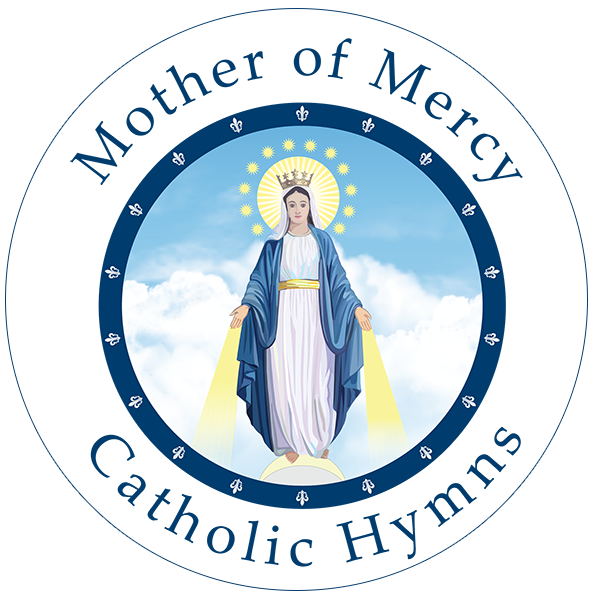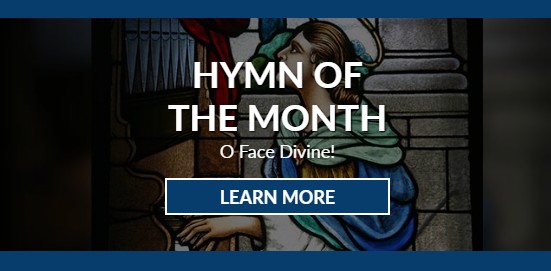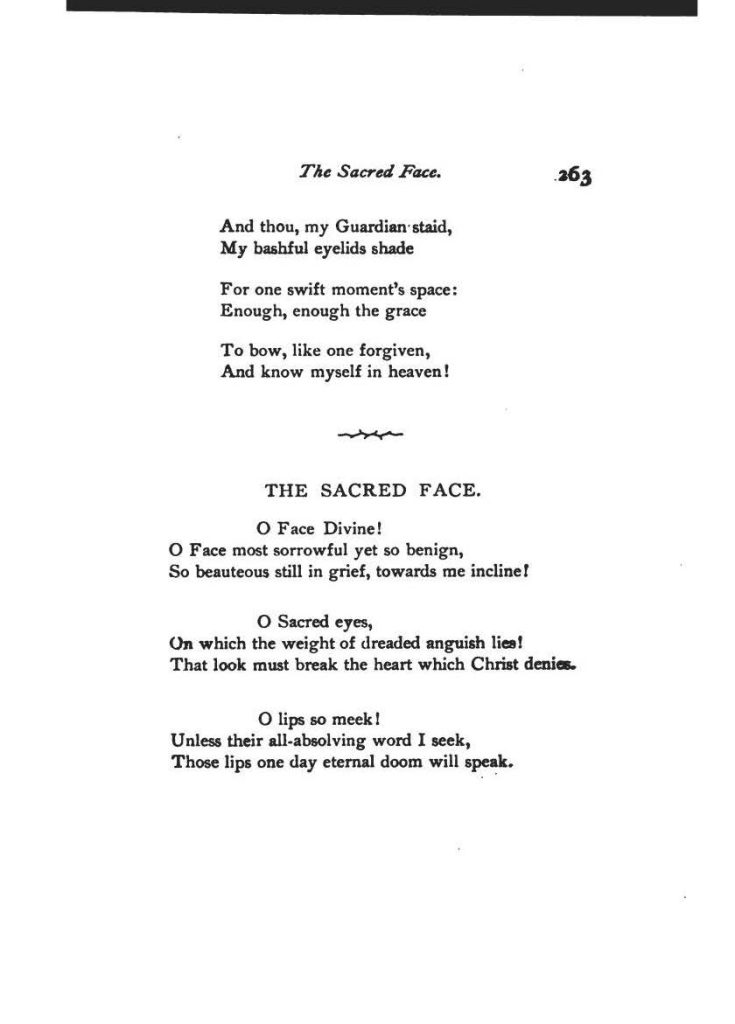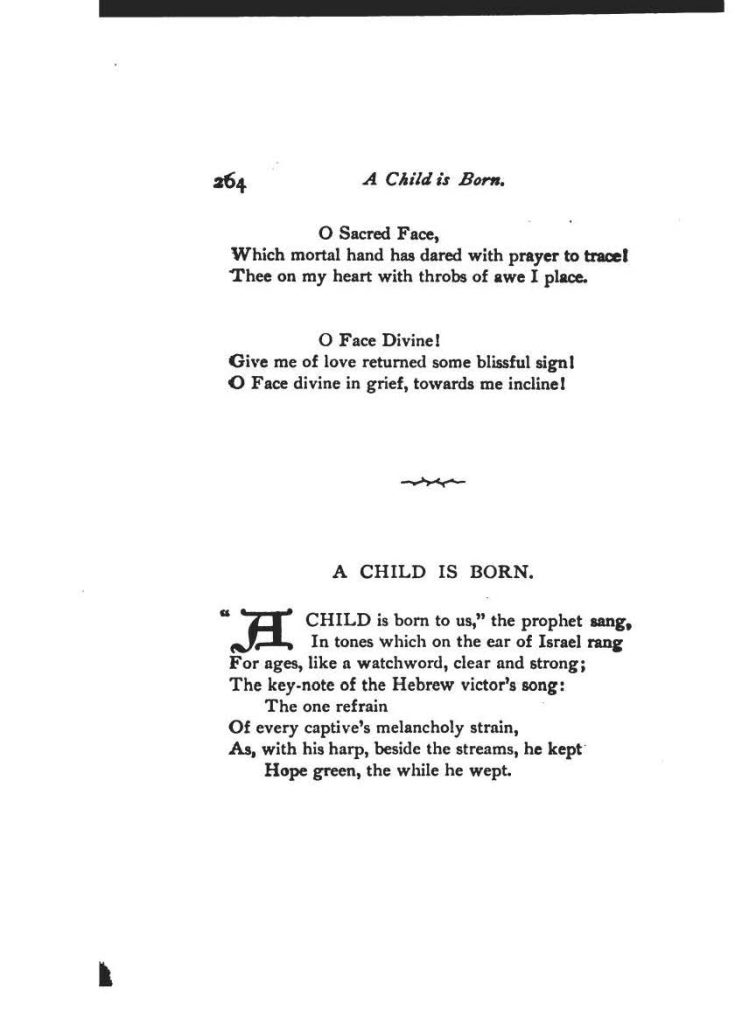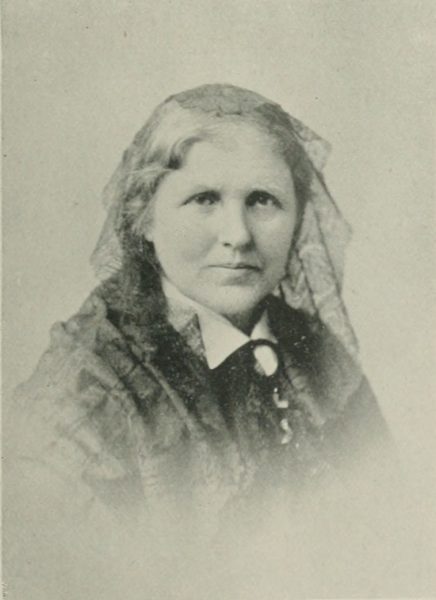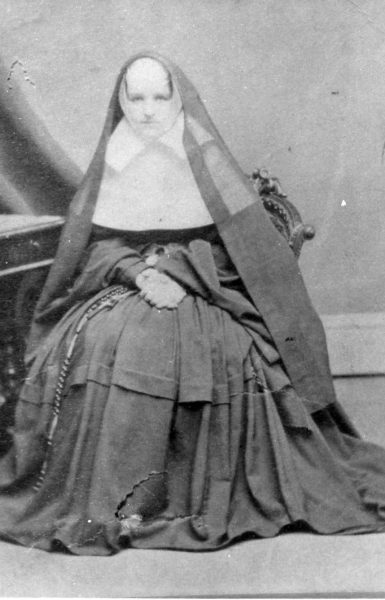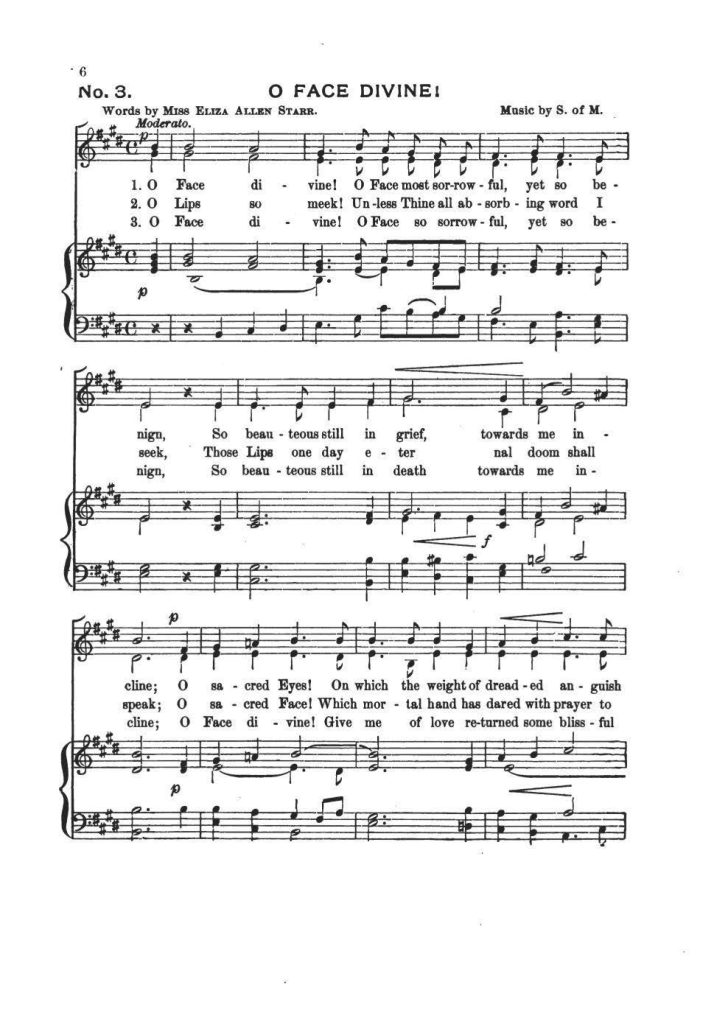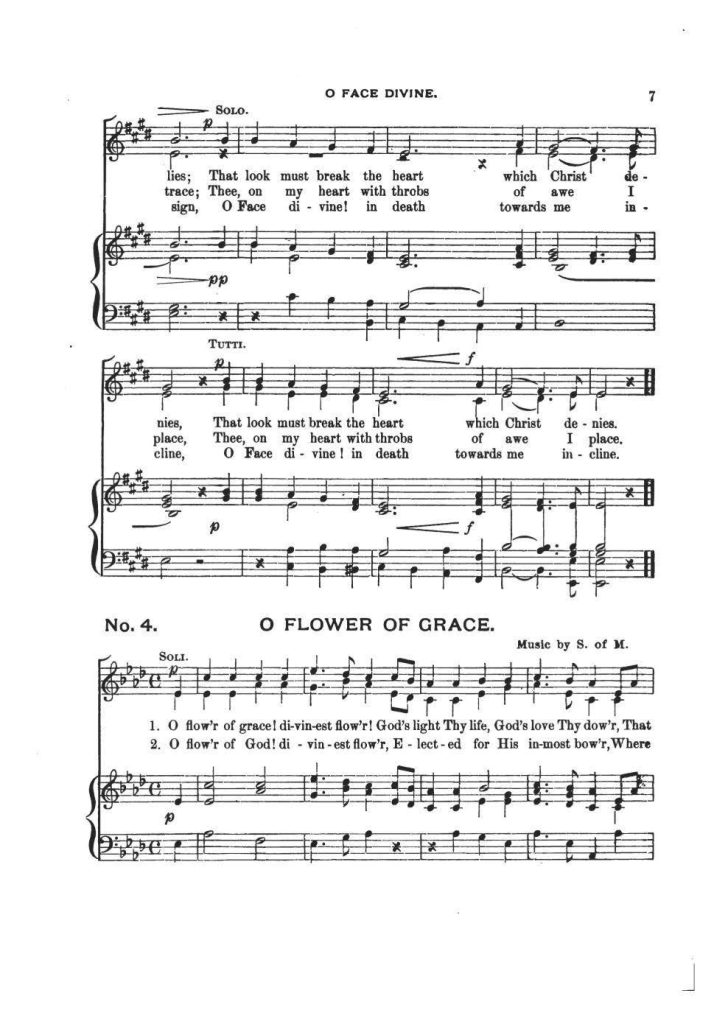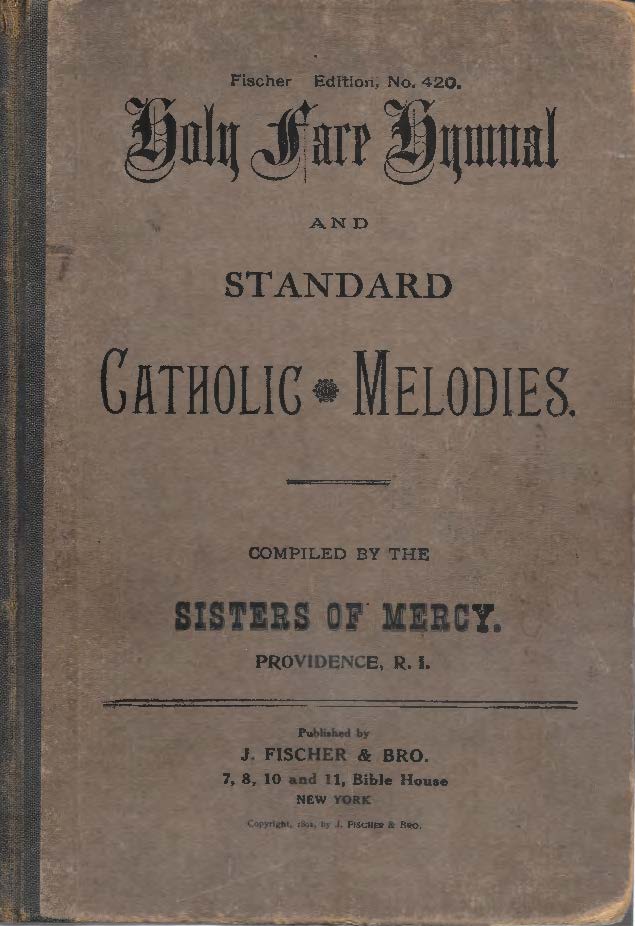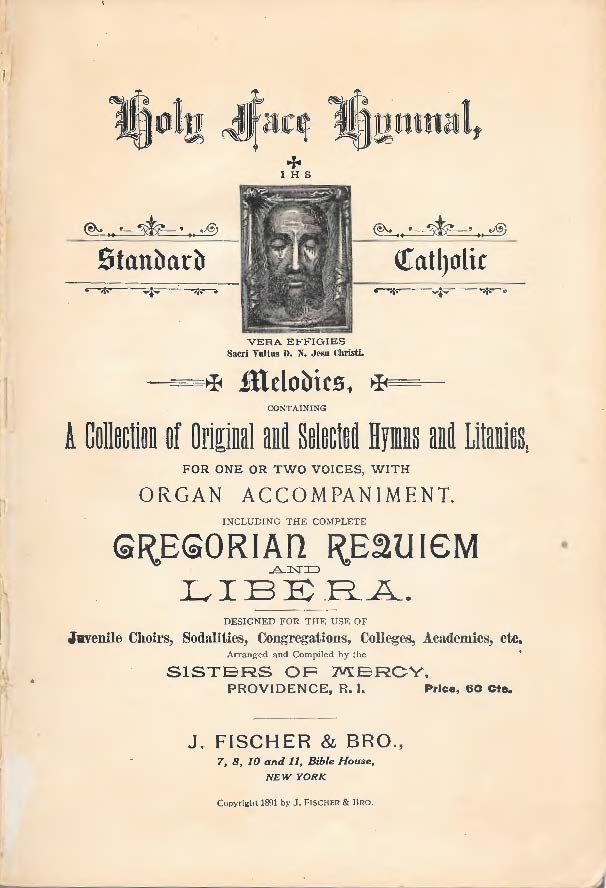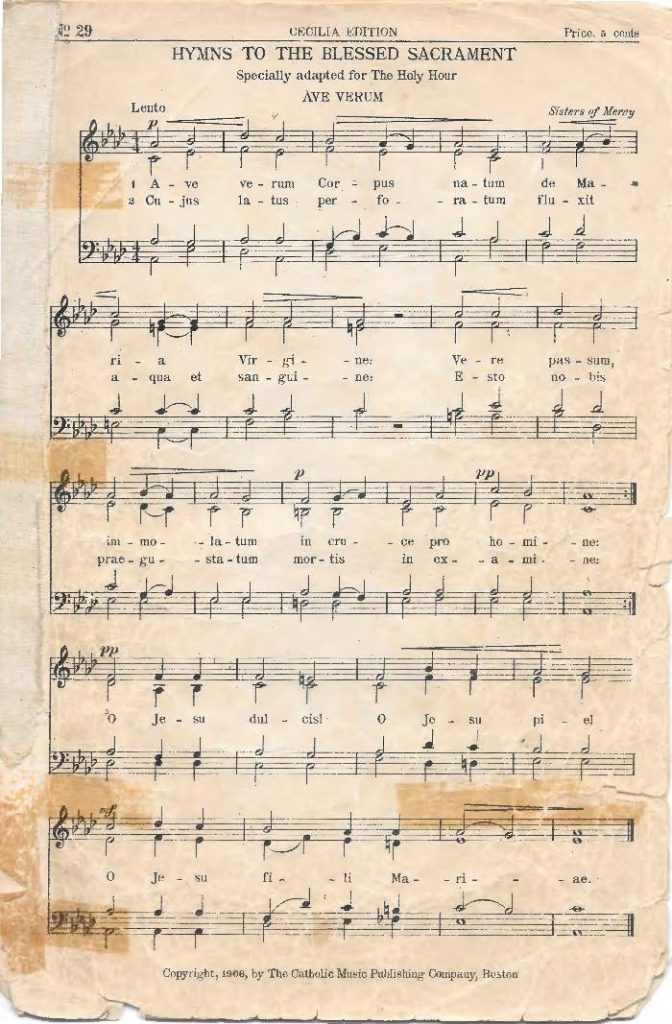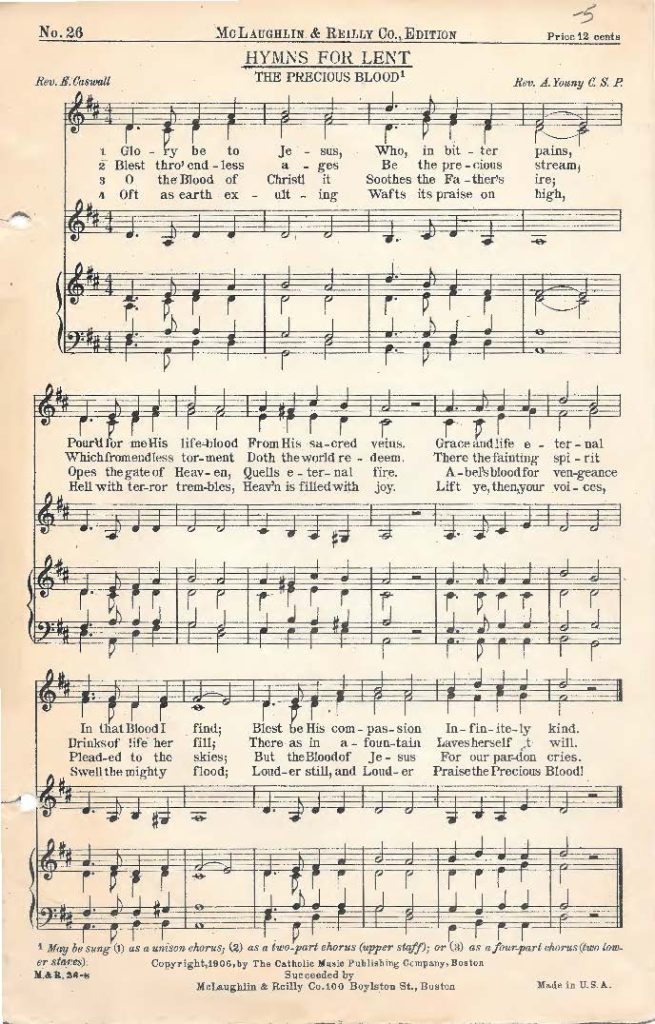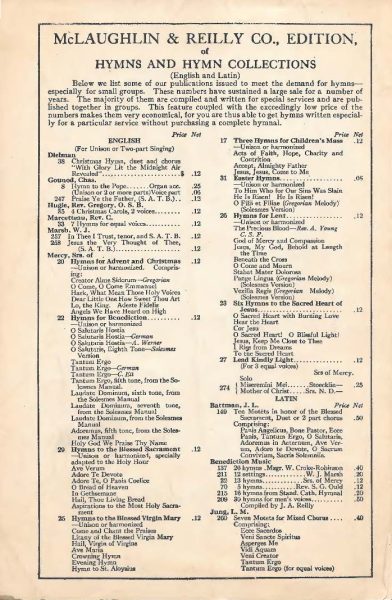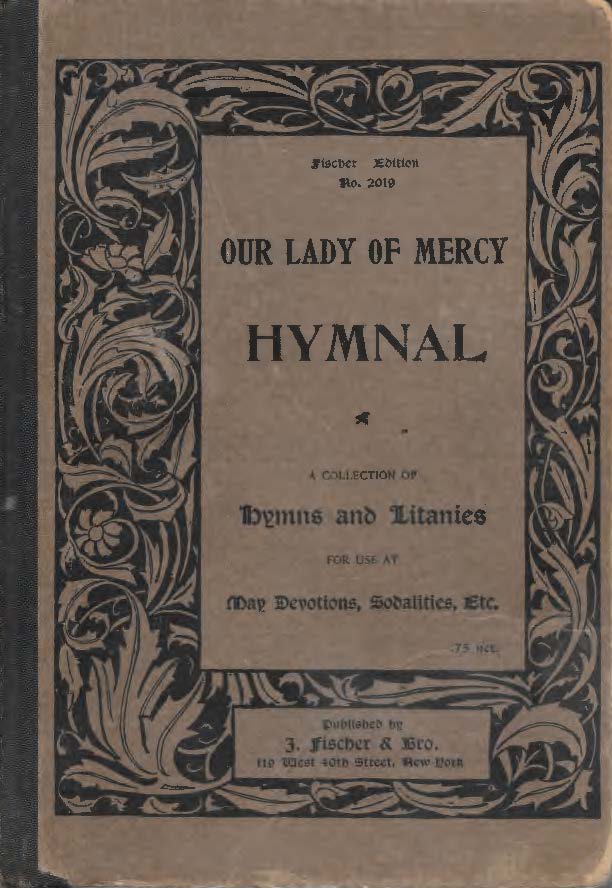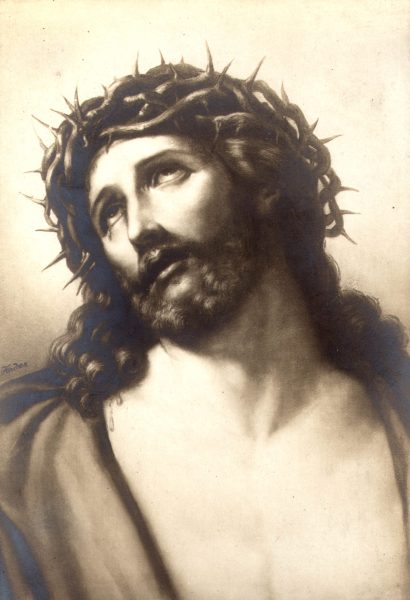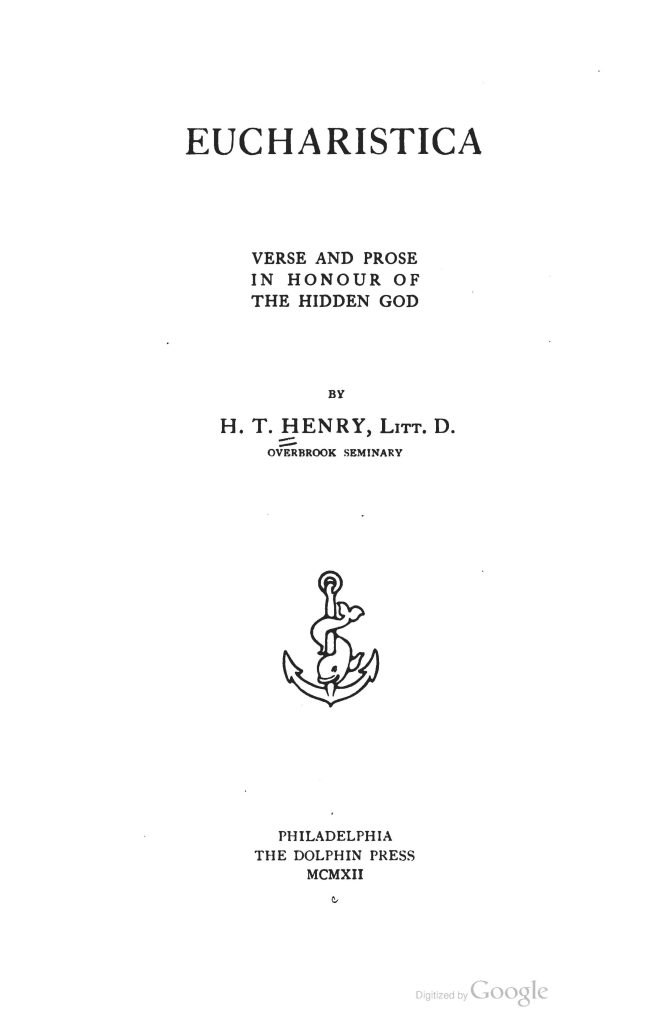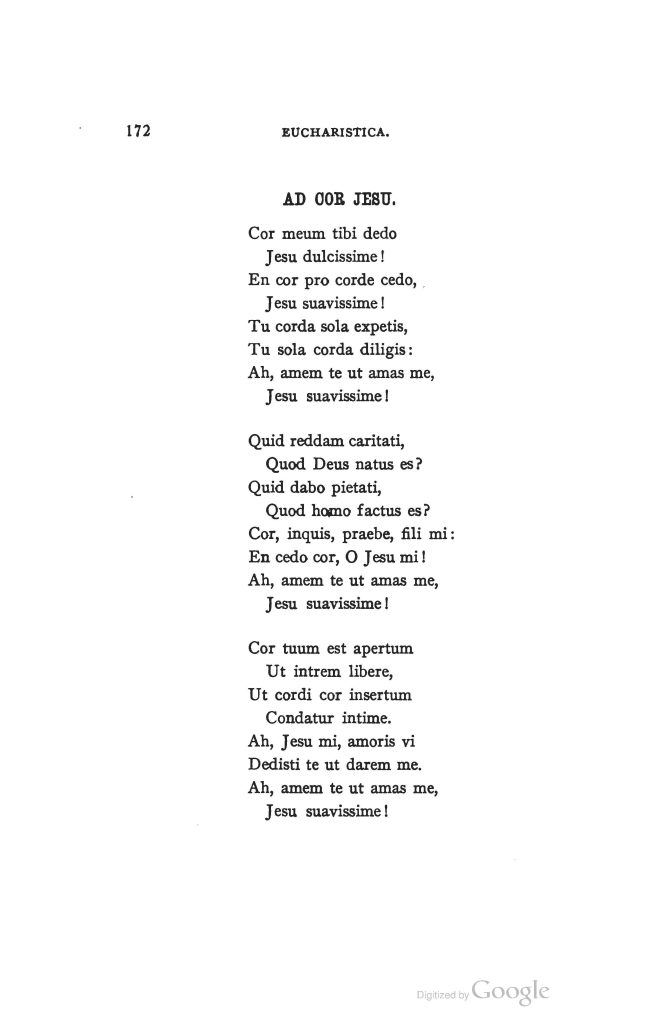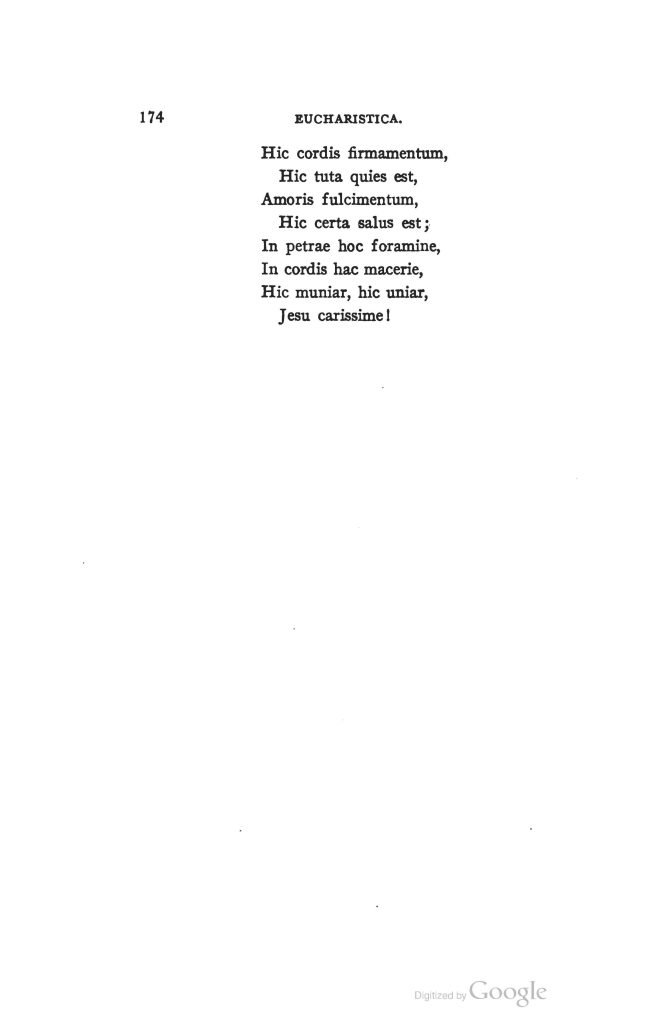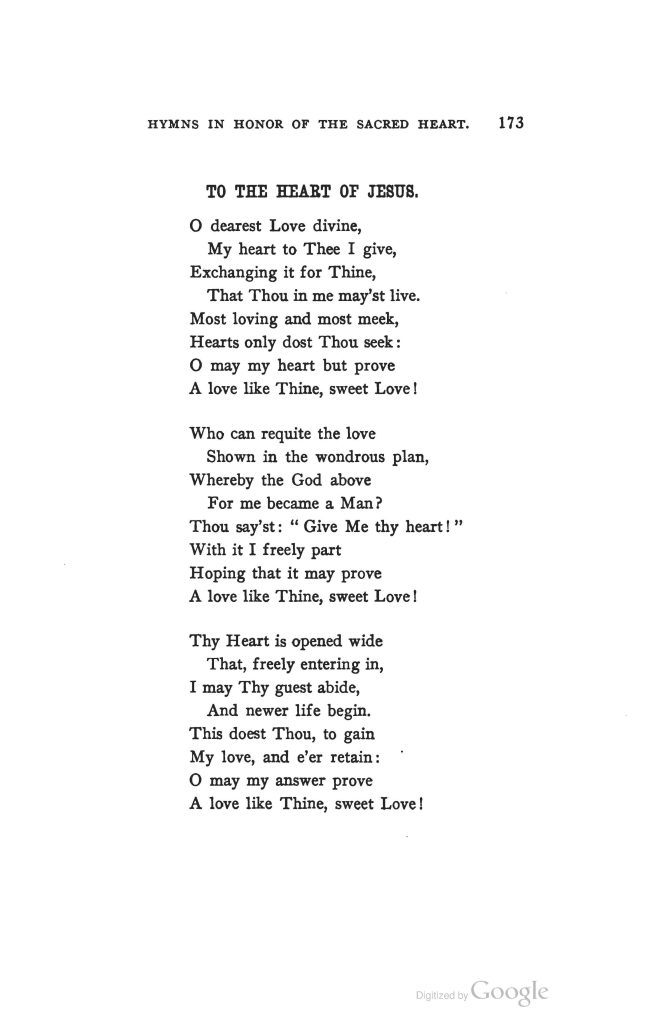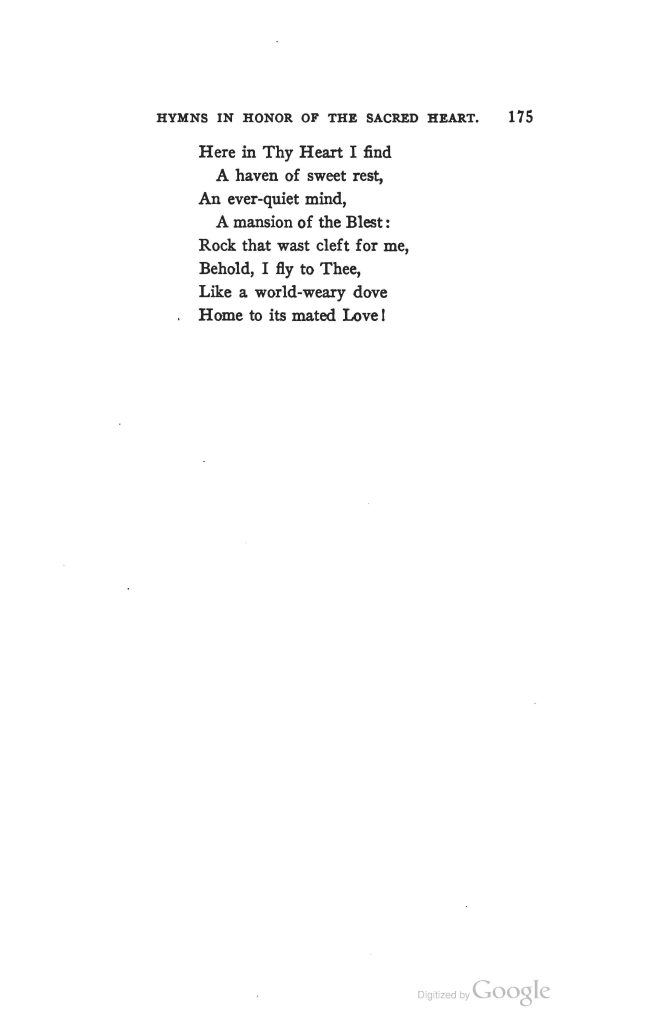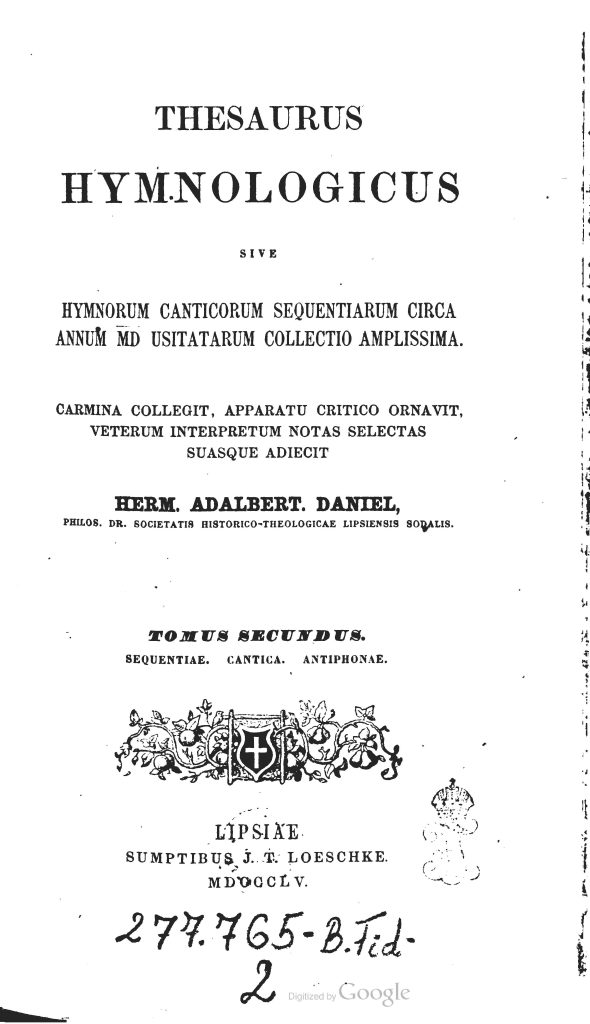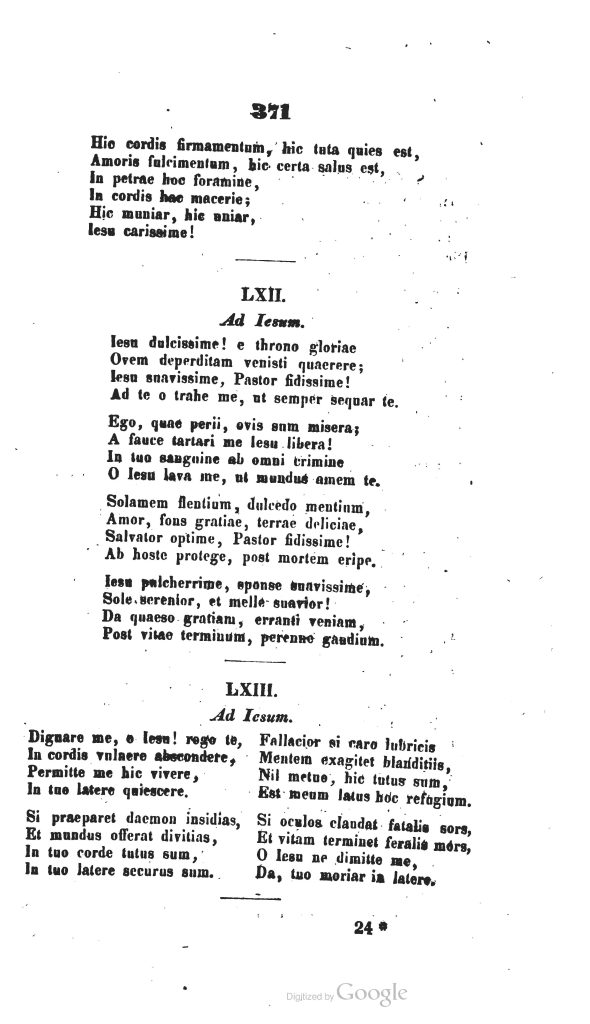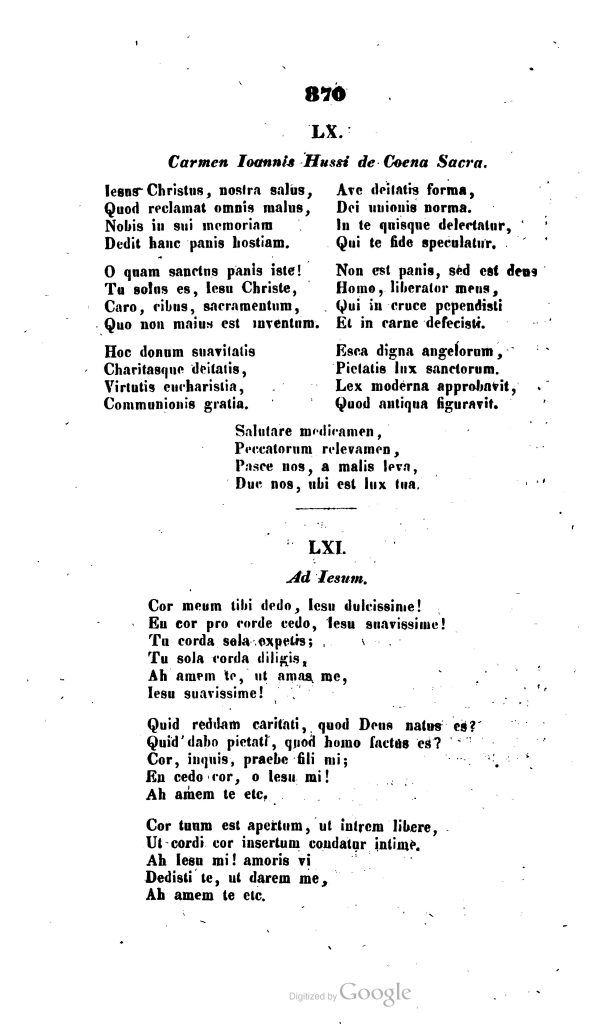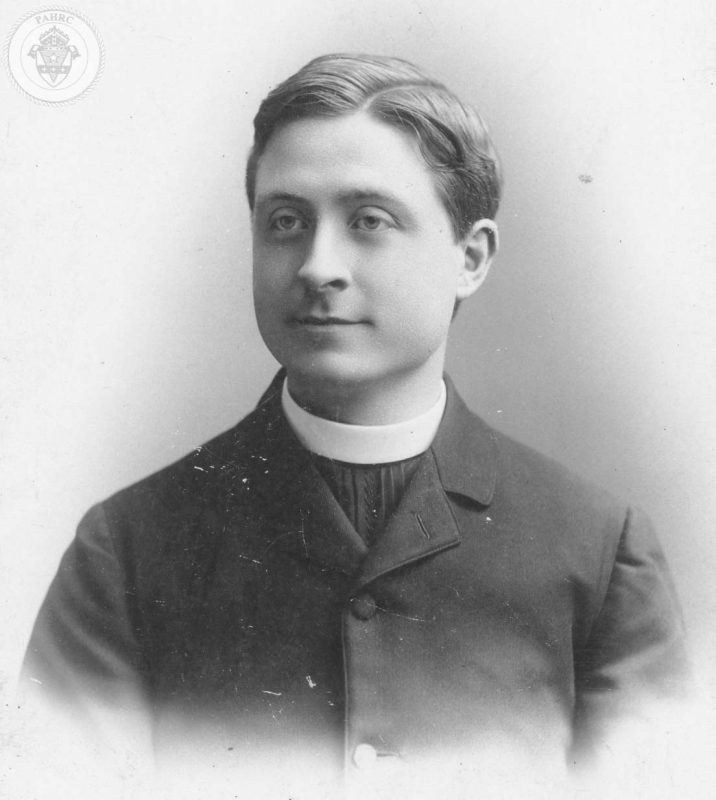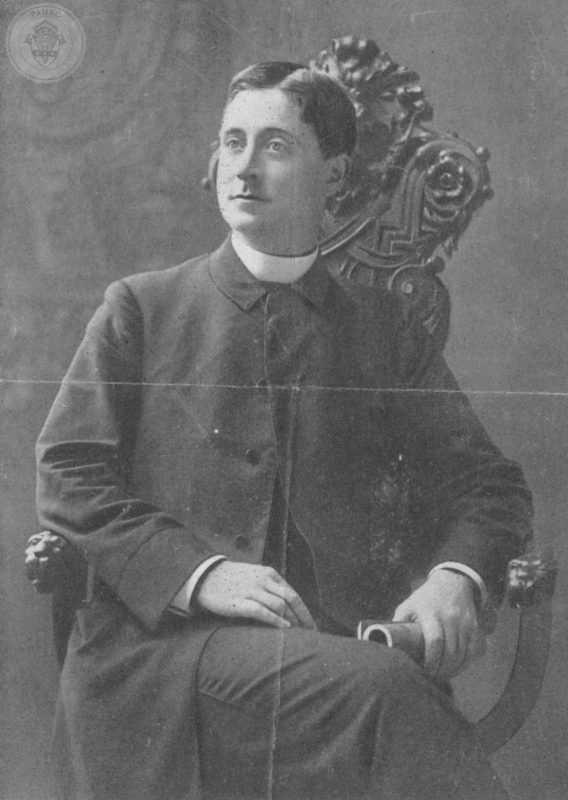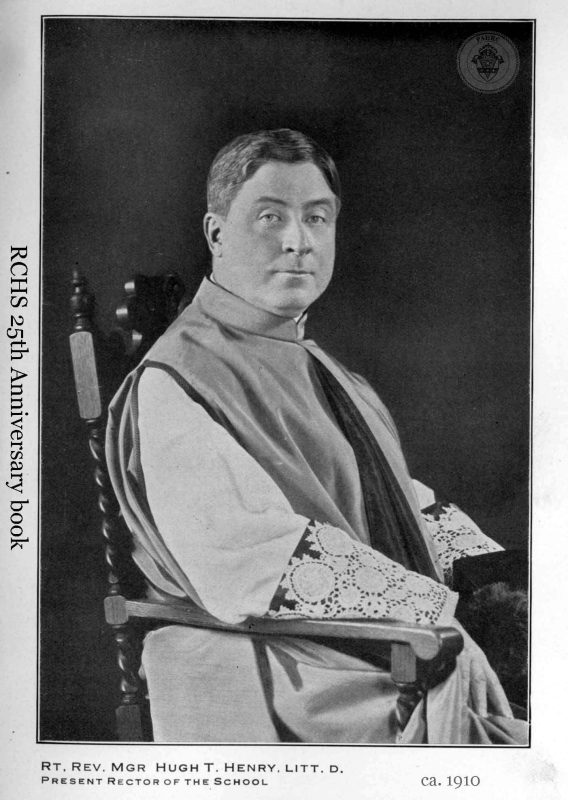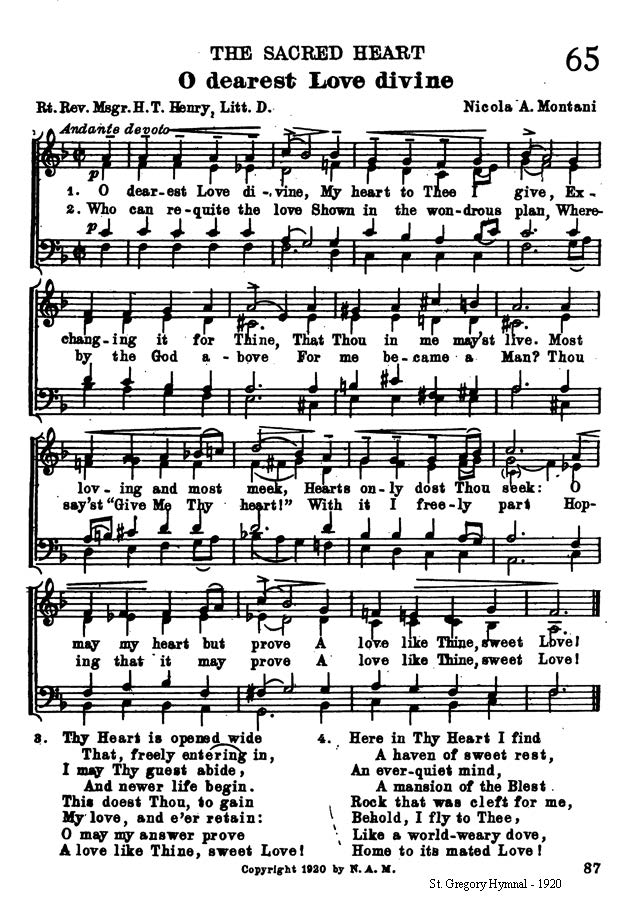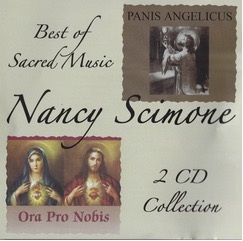The hymn O Face Divine! was written by Miss Eliza Allen Starr and first appeared in her collection of poem Songs of a Life-Time, published in 1887 when Miss Starr resided at St. Joseph’s Cottage in Chicago.
Eliza was a prolific poet, art teacher, and lecturer. She grew up in Deerfield, Massachusetts, and studied art in Boston. She taught art in Brooklyn, Philadelphia, and Natchez, Mississippi, and under the auspices of Archbishop Peter R. Kenrick (1806-1896), she joined the Church of Rome in 1854 at the old Holy Cross Cathedral in Boston.
In 1856, Eliza moved to Chicago where she remained for the rest of her life devoting her time to authoring poems, teaching art, and giving art lectures and courses at schools and academies throughout Chicago. In 1876, her career as an artist took her to Italy, France, and England; and in 1885, Notre Dame University conferred upon her the Laetare Medal, she was the first woman ever to receive this prestigious award. In 1893, she received a gold medal from the World’s Columbian Exposition also known as the Chicago World’s Fair, as an art teacher. Pope Leo XIII honored Eliza in 1900 with a cameo medallion as a mark of his approbation of her literary labors.
Eliza was the author of Patron Saints, Pilgrims and Shrines, Songs of a Life-Time, Isabella of Castile, Christian Art in Our Own Age, Christmas-Tide, The Seven Dolors of the Virgin Mary, and Three Archangels and the Guardian Angels in Art. A short biographical sketch of her life was published in the 1893 Woman of the Century – Leading American Women by Frances Willard and Mary Livermore. Also, in the Who’s Who in America, 1901/1902 by John Leonard. Eliza was a well-respected author and art critic known throughout America and Europe.
Eliza never married and later in life she joined the Third Order of St. Dominic. She died at the age of seventy-seven after a short illness while visiting her brother in Durand, Illinois. She was buried at Calvary Catholic Cemetery in Chicago wearing the Dominican habit.
The music was composed by Sister Mary Alexis Donnelly of the Sisters of Mercy at St. Xavier’s Convent, Providence, Rhode Island. Sr. Mary Alexis Donnelly was one of the major contributors to American Catholic music in the late 19th and early 20th century period. Her contributions to Catholic music, however, have largely been forgotten by all except a few vintage organists and hymnologists.
Sister Mary Alexis was born Julia Donnelly in Yorkshire, England during the month of March 1857. When she was a young girl, she came to the United States and settled in the small town of Harrisville, Rhode Island. On November 1, 1877, she entered the Sisters of Mercy at St. Xavier’s Convent, in Providence, Rhode Island. She was recognized by her superiors as a gifted musician and began her first teaching assignment at St. Patrick’s School, Providence.
At the urging and solicitation of friends, she compiled her first hymnal with all original music and dedicated it to the Holy Face of our Lord to whom she had a deep devotion. The HOLY FACE HYMNAL was published by J. Fisher & Bro., of New York in 1891.
The Holy Face Hymnal received several letters from convents, various parishes, and cathedrals in appreciation and praising the hymnal for its easy melodies and its suitability for children’s voices. It’s very interesting to read through these letters and see how well the hymn book was received.
Sister Mary Alexis, who would later become Mother Alexis, had a great devotion to the Holy Face. The first three hymns in this collection are devoted to the Holy Face.
In 1904, The Catholic Music Publishing Company was founded by James M. McLaughlin and James A. Reilly. Soon afterwards, the company became known as McLaughlin & Reilly Company and was one of the most successful Catholic music publishing companies in America. Sister Mary Alexis had close associations with the company’s president, James A. Reilly, who was a benefactor of the Sisters of Mercy.
Some of the first musical selections to appear in the company’s catalog were those by the Sisters of Mercy. These appeared in a series of hymn booklets or hymn pamphlets. The hymn pamphlets were approximately eight pages each and were comprised of various hymns suitable for specific occasions or general use. These hymn pamphlets were extensively sold throughout McLaughlin and Reilly’s existence. (Click on any image to enlarge)
Due to the success of her first hymnal, Sister Mary Alexis compiled two additional hymn books. OUR LADY OF MERCY was published in 1899, and OUR LADY OF MERCY VOL. 2, was published in 1927.
In 1910, Sister Mary Alexis was elected Reverend Mother of the Providence Community of the Sisters of Mercy and served in this capacity for six years. Mother Alexis was a natural concerning business and community affairs and was gifted with foresight and was almost prophetic in many of her duties as Reverend Mother.
The health of her sisters was of paramount importance to her, so she conceived of a place in the country for rest and relaxation. During her role as Reverend Mother, she acquired the Fiske Estate which was to become the Mount St. Rita property in Cumberland, Rhode Island. For many years Mount St. Rita served as a retreat and convalescing home for the sisters. Eventually, the Sisters gave up this wonderful facility to a large health care system and it became known as Mount Saint Rita Health Center.
Sister Mary Alexis taught music for more than twenty years in many of the schools of the Providence Diocese and continued to write hymns, many of which appeared in sheet music form. Some of these were privately published by the Sisters of Mercy, some by the Oliver Ditson Co., a music publisher with offices in Boston, Chicago, and other major cities throughout United States, and by McLaughlin & Reilly. She composed at least three Ave Maria’s and several choral pieces. If you would like to listen to some of her compositions, new recordings can be found at The Devotional Hymns Project website produced by Peter Meggison.
In 1935, she asked to go to St. Xavier’s to prepare for her meeting with her beloved Father. Sister Mary Alexis Donnelly died on July 4, 1936, at St. Xavier’s Convent, Providence, Rhode Island. Many of Sister Mary Alexis’ compositions were dear to her and one was her favorite, Jesus, Keep Me Close to Thee, which was played and sung at her funeral Mass.
As a member of the Sisters of Mercy, Sister Mary Alexis gave up the right to have her name added to her compositions. In keeping with the custom of the time, attribution was given to the Community rather than the individual. Now, since Vatican II, those in religious life are treated as individuals and receive credit for their work. These musical compositions are a testament to the technique, harmonization, and beauty of expression of this outstanding Catholic musician and Sister of Mercy.
Reflection
In her book of poems Songs of a Life-Time, there is a page of Dedication to Miss Starr’s Father and Mother that is dated Feast of the Purification, 1867. There are individual poems that date earlier than 1867 and the earliest poem that I could find was dated 1848. This poem O Face Divine! appears in a section captioned Later Poems and these date from 1867 thru 1885. Although, there is no date given on the poems page, it falls among poems written between 1873 to 1874 and so I conclude that O Face Divine! to have been written during that period.
Miss Starr’s poem O Face Divine! was captioned The Sacred Face and the verses reflect a woman who was meditating on the face of the Lord while He was nailed to the cross. She takes us to the foot of the cross and there in poetic imagery reveals to us that even though our Lord’s face was in grief and pain, it was still beautiful, so beauteous still in grief.
In the second verse, she looks upon his sacred eyes and captures the anguish He must have been enduring but more to the point, the anguish that was visible in his eyes from the many hearts that have denied him.
O Sacred eyes,
On which the weight of dreaded anguish lies,
That look must break the heart which Christ denies.
One of my grandmother’s possessions was a framed post card of Jesus crowned with thorns. I don’t remember anymore how it came to be in my possession, but I would like to think that Miss Starr had a similar image to gaze upon when she wrote her poem. Take a moment to reflect on the verses and learn from Miss Starr how easy it is to meditate on that Face Divine! If anyone knows the name of this image or the artist, please let me know.
I would like to thank Peter Meggison, who is the producer of The Devotional Hymns Project website for granting permission to use a recording made at the Church of the Advent, located in Boston’s Beacon Hill section. I have also included a computer-generated sound file, the tempo is approximate but should give the listeners a good sense of what the hymn sounds like.
